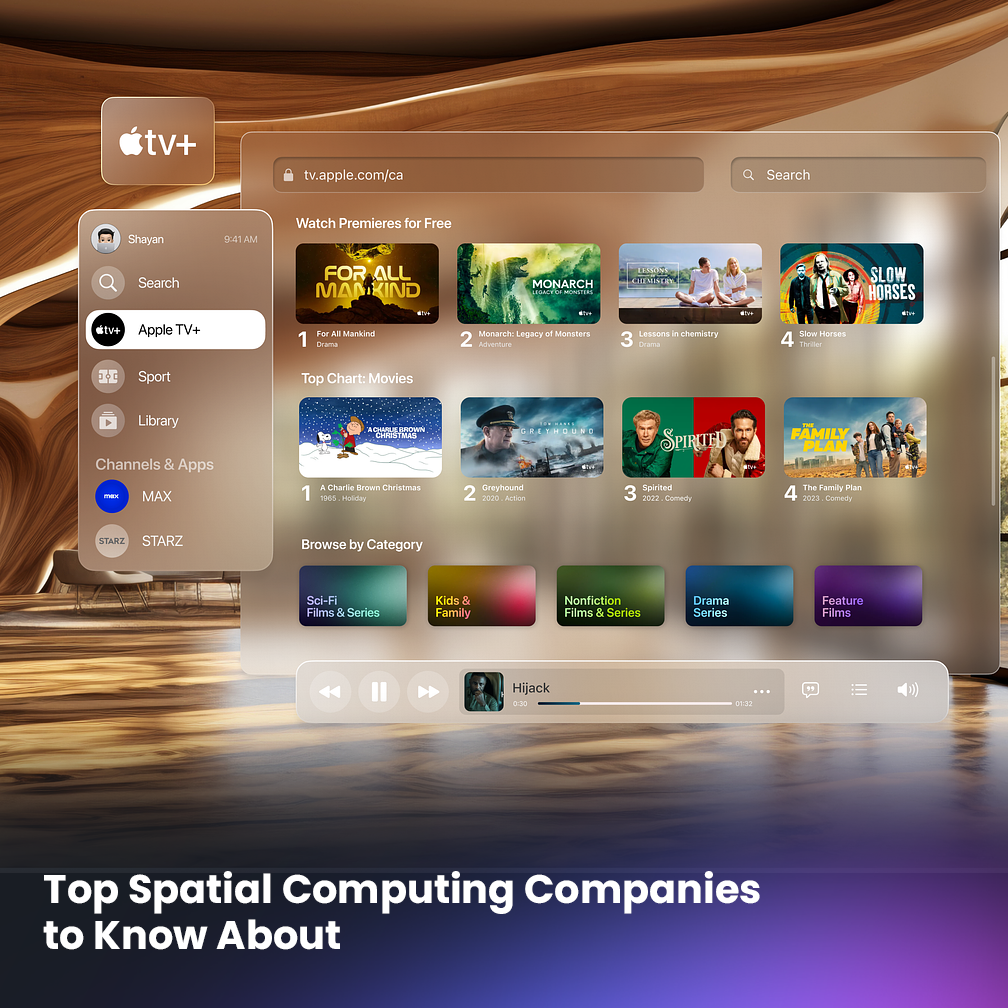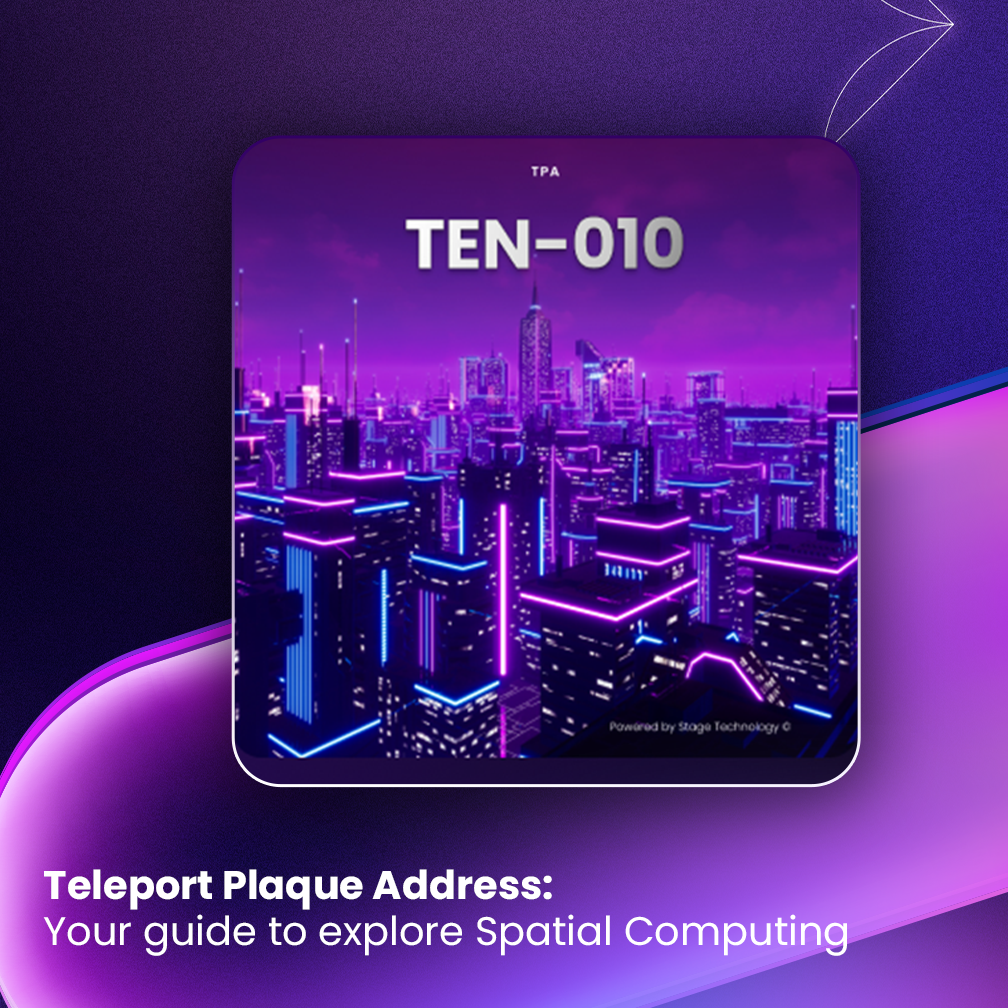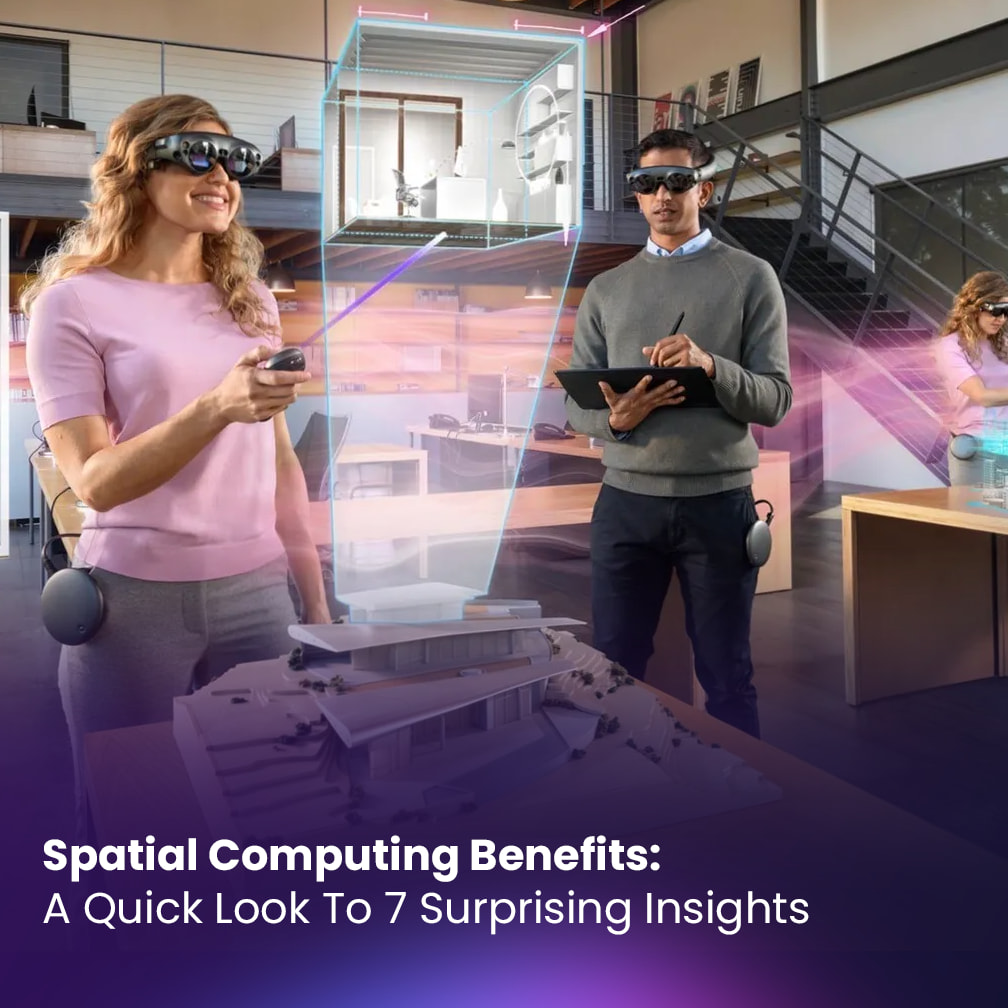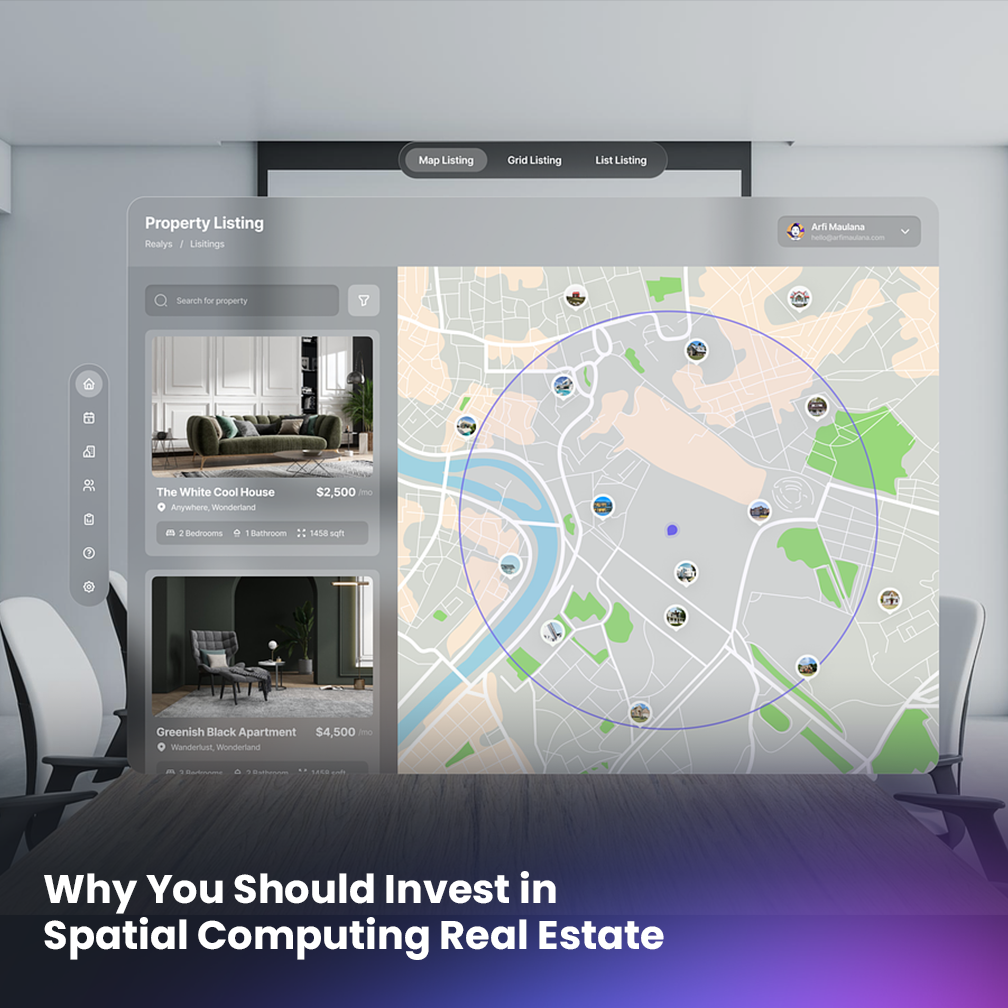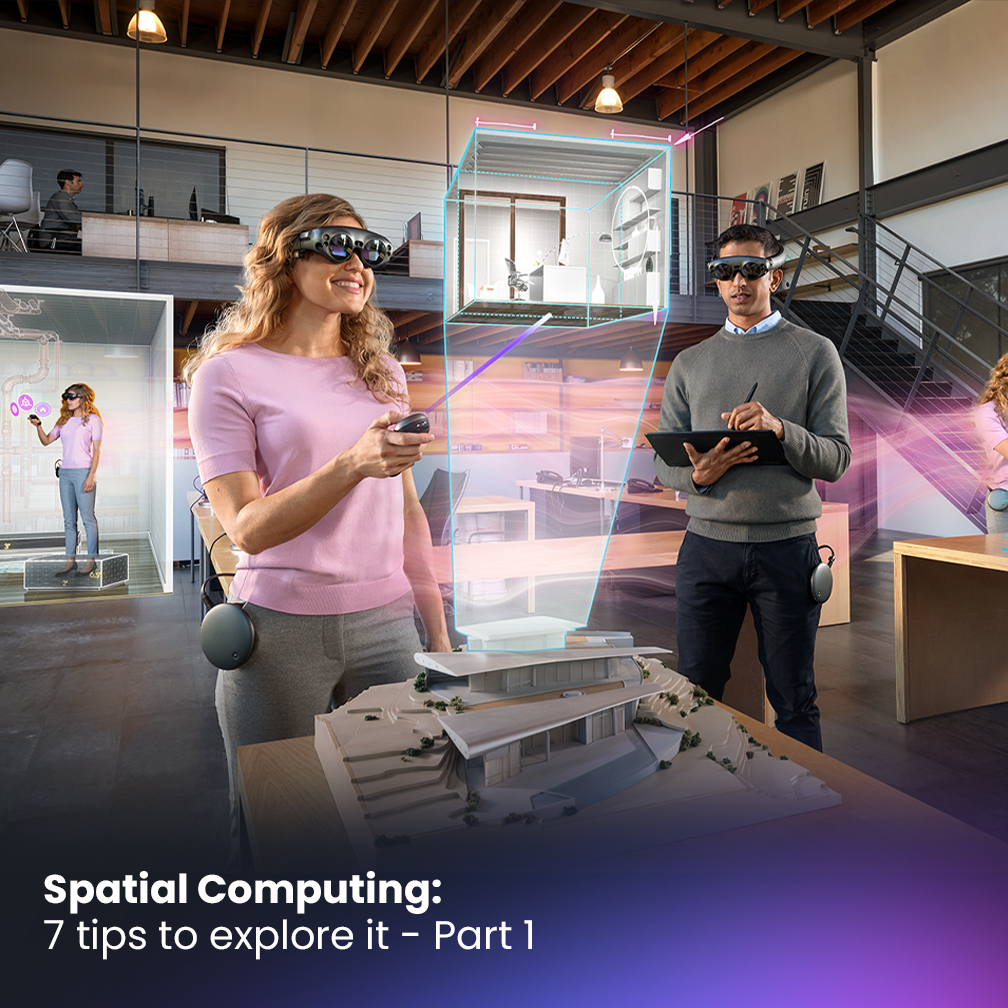
Estimated reading time: 7 minutes
Welcome to the fascinating world of Spatial Computing!
This ever-growing, ever-evolving landscape is a place where anything can happen. But it can be difficult to know how to explore and navigate this new frontier.
That’s why we’ve put together this quick guide on how to get started in spatial computing. From tips and tricks for finding your way around virtual space to advice on creating a memorable avatar, this blog has everything you need to know about exploring spatial computing like a pro.
Here are our 7 top tips for exploring spatial computing in a safe and fun way:
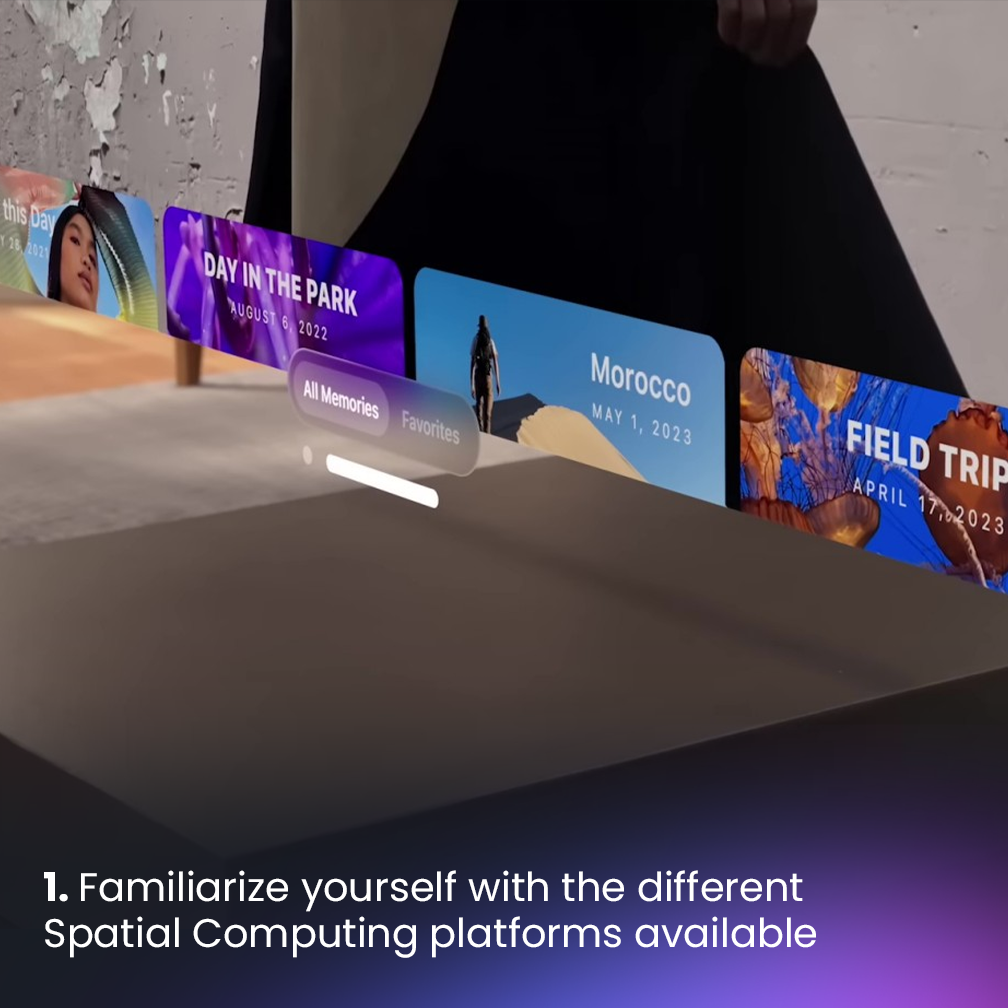
1. Familiarize yourself with the different spatial computing platforms available:
Exploring spatial computing can be an exciting adventure, but it can also be overwhelming, especially for those who are new to the concept.
To make the most out of your journey, it’s crucial to familiarize yourself with the different platforms available in spatial computing.
Virtual worlds come in different shapes and sizes, and each has its unique set of features, tools, and capabilities. By taking the time to explore each platform, you’ll get a better understanding of what’s available and what you can do in spatial computing.
Start by researching the popular platforms available. Each platform has its own community, user interface, and tools, so it’s essential to find the one that suits your needs best.
Once you’ve identified a few platforms, take the time to explore them fully. Try to engage with the community and join groups or events to get a better sense of what the platform is all about.
Experiment with different avatars, visit different locations and try out different activities to get a better sense of what you can do in each world.
Overall, familiarizing yourself with the different platforms available is crucial to understanding how the spatial computing works. By doing so, you’ll be better equipped to navigate this exciting new world and make the most out of your virtual experiences.
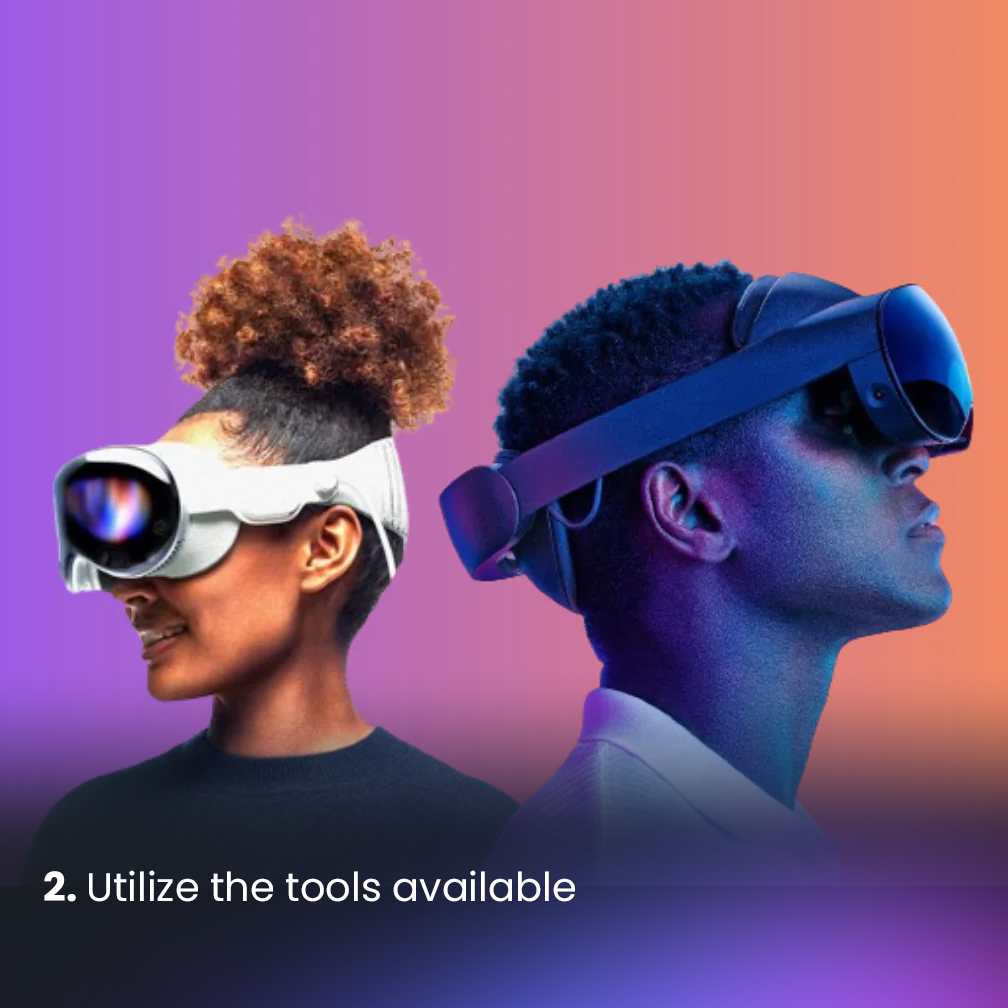
2. Utilize the tools available
As you explore spatial computing, you may find yourself in need of some tools to help you navigate virtual space more efficiently.
Luckily, there are plenty of resources available that can help you get around quickly and easily.
One useful tool is a map viewer, which provides a visual representation of the virtual world you’re exploring.
Map viewers can help you identify landmarks, locate other users, and find your way around more easily.
Many virtual worlds have built-in map viewers, but there are also third-party tools available that provide additional functionality.
Another valuable tool is a teleportation program or a teleportation plaque, like Stage Meta’s Teleport Plaque Address. Many virtual worlds are vast and sprawling, making it difficult to get from one place to another quickly.
Teleport Plaque Addresses allow you to move instantly from one location to another, saving you time and effort.
Additionally, many virtual worlds have social tools that allow you to connect with other users. These tools can help you find people with similar interests or join groups focused on specific topics. By connecting with other users, you’ll have the opportunity to make new friends and discover new things in spatial computing.
There are also tools available for content creation, such as 3D modeling software and scripting languages. If you’re interested in building your own virtual objects or environments, these tools can help you get started.
Ultimately, utilizing the tools available in spatial computing can make your experience more enjoyable and productive.
Take the time to explore the different tools available, and don’t be afraid to experiment with different options to find what works best for you.
With the right tools at your disposal, you’ll be able to navigate spatial computing like a pro.

3. Create an avatar
One of the most important things to consider when exploring spatial computing is creating a character or avatar.
Your avatar is essentially a digital representation of yourself in the virtual world, and it’s an essential tool for making connections with other users.
When creating your avatar, consider what kind of image you want to project. Do you want to look like yourself in real life, or do you want to create a more fantastical or futuristic look?
You can customize everything from your hair and eye color to your clothing and accessories, so take the time to experiment and create a look that feels authentic to you.
It’s also important to choose a name that’s memorable and easy to remember.
While you can always change your name later on, choosing something that stands out will help other users remember you and make it easier to connect with them later on.
Once you’ve created your avatar, take the time to explore the virtual world and interact with other users. Attend events, join groups, and strike up conversations with other avatars to start building relationships.
Having a unique and memorable avatar will help you stand out, ensuring that people remember you and want to connect with you.
Ultimately, creating a character in spatial computing is a fun and creative way to express yourself and connect with others.
Take the time to create a look that feels authentic to you, and don’t be afraid to experiment with different styles and accessories.
With the right avatar, you’ll be well on your way to making lasting connections in spatial computing.
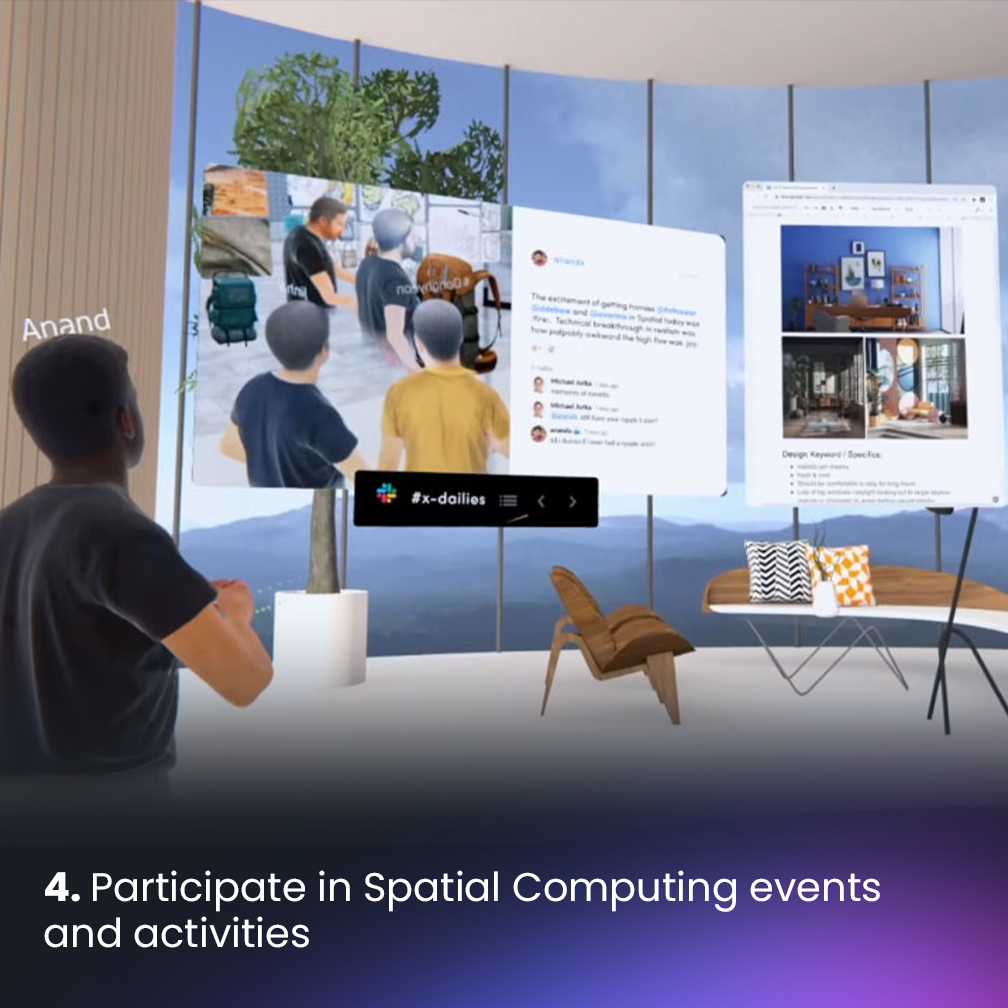
4. Participate in Spatial Computing events and activities
Participating in events and activities is one of the best ways to explore spatial computing and connect with other users.
There are a wide variety of events and activities available, from virtual concerts and art exhibits to game tournaments and social gatherings.
Participating in these events not only allows you to have fun and experience new things, but it also gives you the opportunity to meet new people and form connections within spatial computing community.
One of the best ways to find events and activities is to check out the calendar or events section within your chosen virtual world.
Many virtual worlds have their own built-in event calendars, which can be a great way to stay up-to-date on what’s happening.
Additionally, there are often user-run events that are advertised on forums or social media, so it’s worth keeping an eye out for these as well.
When participating in events and activities, don’t be afraid to get involved and engage with others. Strike up conversations, join groups, and make an effort to connect with other users who share your interests.
Building relationships within spatial computing community can be a great way to enhance your experience and make new friends.
Finally, it’s worth noting that many events and activities are time-limited, so it’s important to keep an eye on the calendar and plan accordingly. Make sure to mark your calendar for events that you’re interested in, and be sure to show up on time so that you don’t miss out on anything.
Overall, participating in events and activities is a fantastic way to explore spatial computing and connect with others. Take the time to check out what’s happening in your chosen virtual world, and don’t be afraid to get involved and have some fun.
Exploring spatial computing can be an incredibly rewarding experience. Whether you’re creating a unique avatar, participating in events and activities, or utilizing tools available on the platform, there are countless ways to make your virtual adventures even more enjoyable.
Next time we will visit the other three tips for exploring spatial computing. With the right approach, staying up-to-date with new developments in spatial computing, expanding your knowledge, and having fun along the way, you can easily become a master of this ever-evolving world.
